Nestled on the rugged shores of Loch Crinan in Argyll, Scotland, Duntrune Castle is a place where history comes alive. With its stone walls weathered by centuries of storms and battles, this castle is one of Scotland’s oldest continuously occupied fortresses. But Duntrune is more than just a historical site—it’s a storyteller. Every brick, every corner, and even the statue of a stag guarding the entrance has a tale to share. Let’s take a journey through the layers of history and the enchanting atmosphere that make this place unforgettable.
A Castle Rooted in History
Duntrune Castle dates back to the 13th century, a time when Scotland was a land of clans and fortresses. Originally built by the MacDougall clan, the castle was strategically positioned on the north side of Loch Crinan to protect the surrounding area from invaders. With its sweeping views of the loch and the distant hills, it served as both a defensive stronghold and a symbol of power.
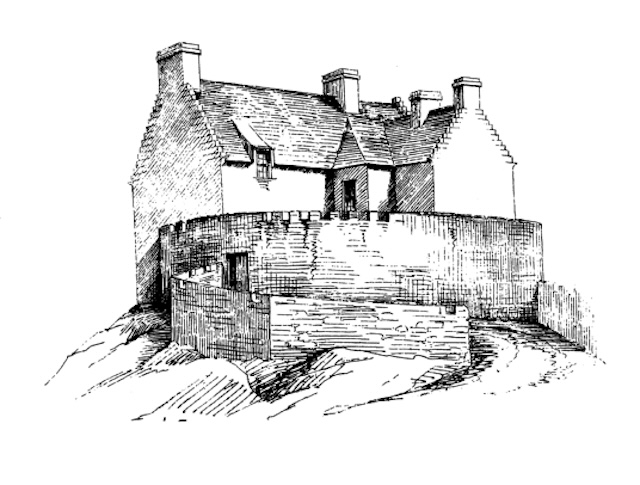
The castle’s early design reflects its purpose. Thick walls and rounded corners—typical of medieval Scottish architecture—helped it withstand attacks, while its commanding location gave its occupants an advantage over their enemies. The MacDougalls, however, wouldn’t hold onto it for long. After siding against Robert the Bruce during the Wars of Scottish Independence, they were stripped of their lands, including Duntrune.
The Campbell Era: Turmoil and Transformation
By the early 14th century, the castle had passed into the hands of the Campbell clan, loyal supporters of Robert the Bruce. The Campbells were instrumental in shaping Duntrune into what we see today. Over the centuries, they fortified the castle and added structures, turning it into a functional residence while retaining its military strength.
But life at Duntrune Castle wasn’t always peaceful. In 1644, during the chaos of the Wars of the Three Kingdoms, the castle was attacked by the rival McDonalds, led by the legendary warrior Alasdair Mac Colla. Some accounts suggest that the castle was partially burned during the attack, though it remained in Campbell hands for many years afterward. Despite their resilience, financial troubles forced the Campbells to sell Duntrune in 1792 to the Malcolm family, who remain its stewards to this day.
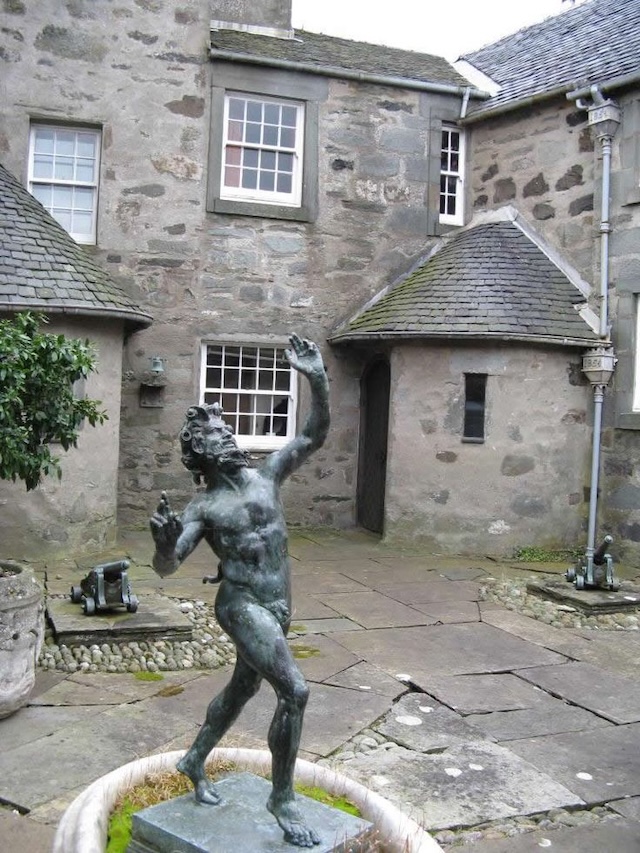
The Stag Statues: Silent Guardians
As you approach Duntrune Castle, one of the first things to catch your eye is the striking statue of a stag, perched prominently near the entrance. It’s not just a decorative piece—it’s a powerful symbol. In Scottish culture, the stag has long been associated with strength, independence, and the untamed beauty of the Highlands. Its presence here feels deeply tied to the spirit of the castle itself.
The stag seems to watch over the estate, a silent guardian of both its history and its future. For visitors, it’s a poignant reminder of Scotland’s natural heritage and the connection between its people and the land. The statue also provides a perfect photo opportunity, framing the castle with a sense of timeless grandeur.
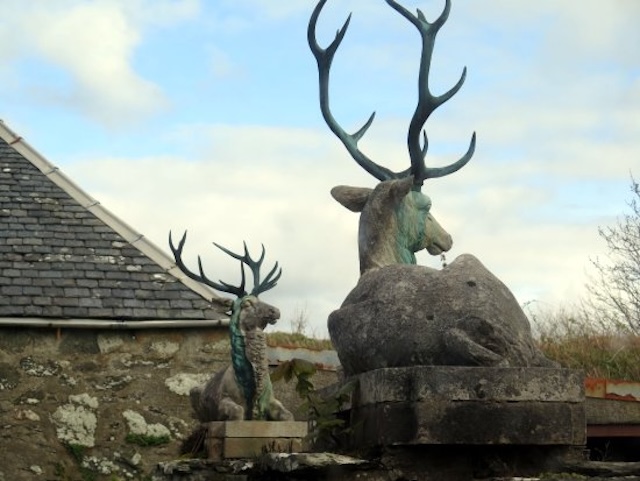
The Piper’s Ghost: Duntrune’s Haunting Legend
No story of Duntrune Castle would be complete without mentioning its most famous ghost. Legend has it that in 1615, a piper from the MacDonald clan infiltrated the castle, disguised as a musician. Once his true identity was discovered, the Campbells imprisoned him and, in a gruesome act of vengeance, severed his fingers to prevent him from playing the bagpipes.
The piper is said to have died within the castle, and his ghost reportedly haunts the estate to this day. Some visitors claim to hear faint bagpipe music echoing through the halls, adding a layer of mystery to the castle’s already rich history. Whether or not you believe in ghosts, this haunting tale only adds to the castle’s allure.
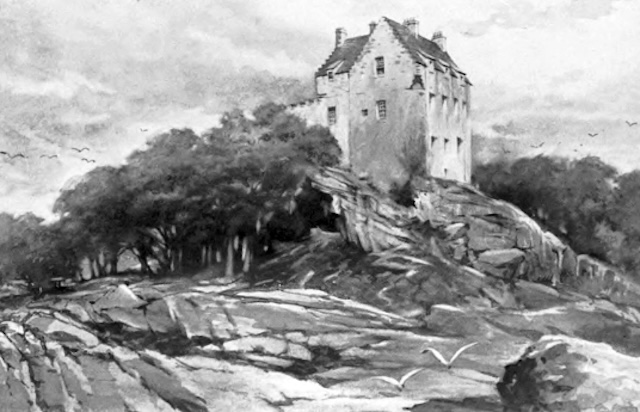
Modern-Day Duntrune: Where History Meets Tranquility
Today, Duntrune Castle is a private residence, lovingly maintained by the Malcolm family. While the castle itself is not fully open to the public, its gardens are accessible for visitors who want to experience the estate’s peaceful charm. You can stroll through the grounds, marvel at the stunning views of Loch Crinan, and, of course, admire the iconic stag statue.
If you’re lucky, you might even be able to arrange a private tour of the castle. While tours are not officially charged, small donations are welcomed to help with the upkeep of the gardens and estate. For those who want to stay a little longer, the estate also offers accommodations, allowing you to wake up to the breathtaking views and experience the magic of living near a historic Scottish castle.
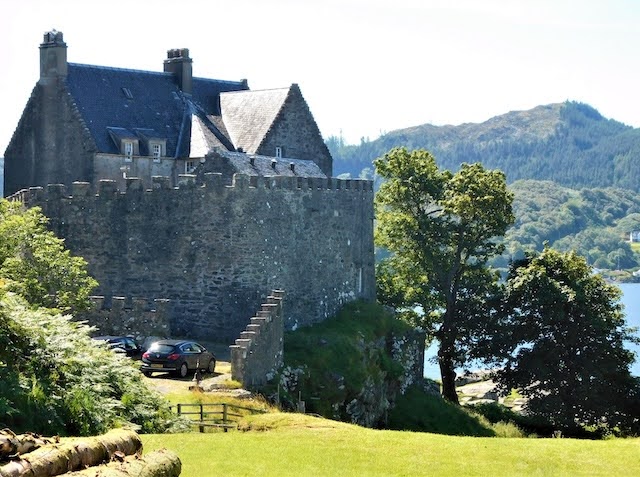
Architectural Charm: A Living Relic
Duntrune Castle’s architecture reflects its long and storied past. The L-shaped tower house, built in the 16th or 17th century, is a defining feature. It was added to an earlier courtyard wall, creating a layered design that reveals the castle’s evolution over the centuries. The entrance, tucked into the re-entrant angle of the tower, leads to a barrel-vaulted basement, once used as a kitchen and cellar.
Above the basement is the grand hall, a space where the Campbells and later the Malcolms would have hosted guests and conducted business. Private chambers occupy the upper floors, offering a glimpse into the daily lives of those who called the castle home. Despite modern renovations, much of the castle’s original charm remains intact, making it a living relic of Scotland’s past.
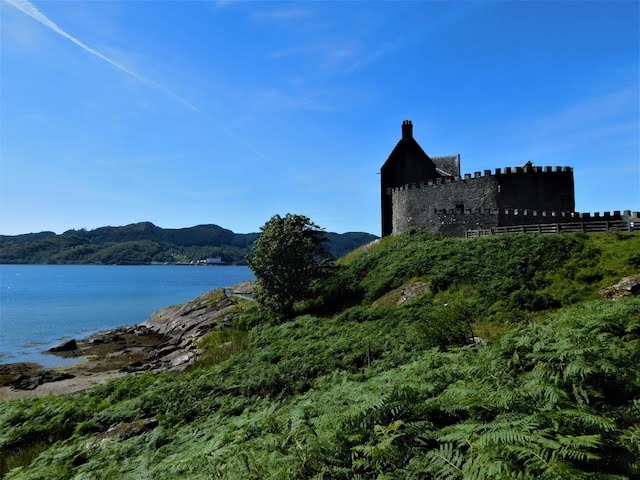
A Castle of Strategic Importance
Duntrune Castle’s location wasn’t chosen by chance. Overlooking the sea to one side and the inland River Add to the other, the castle was perfectly positioned to control access to the region. It also had a clear line of sight to Dunadd, an ancient hill fort that was once the heart of the Kingdom of Dál Riata.
This strategic significance made the castle a valuable prize for whoever controlled it, explaining its turbulent history. Today, its peaceful surroundings belie the drama that once unfolded here, offering visitors a chance to reflect on its storied past.
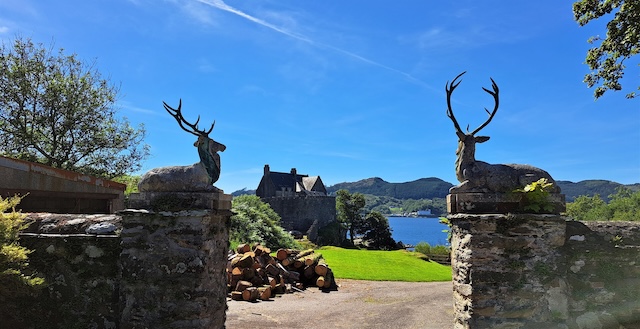
Why Duntrune Castle Should Be on Your Bucket List
There’s something magical about Duntrune Castle. Maybe it’s the haunting beauty of its rugged landscape, or the way the stag statue seems to embody the spirit of the Highlands. Perhaps it’s the rich history, filled with tales of battles, betrayals, and resilience. Whatever it is, Duntrune has a way of captivating the imagination.
If you’re planning a trip to Scotland, this castle is well worth a visit. Whether you’re exploring its gardens, learning about its history, or simply soaking in the views, Duntrune offers an experience that’s equal parts inspiring and humbling.
Plan Your Visit
- Location: Near Lochgilphead and Crinan, Argyll, Scotland
- Gardens: Open to the public by prior arrangement
- Tours: Private tours available with advance notice (donations appreciated)
- Accommodation: Holiday cottages on the estate provide a unique opportunity to stay near the castle
- Contact: Duntrune Castle Website
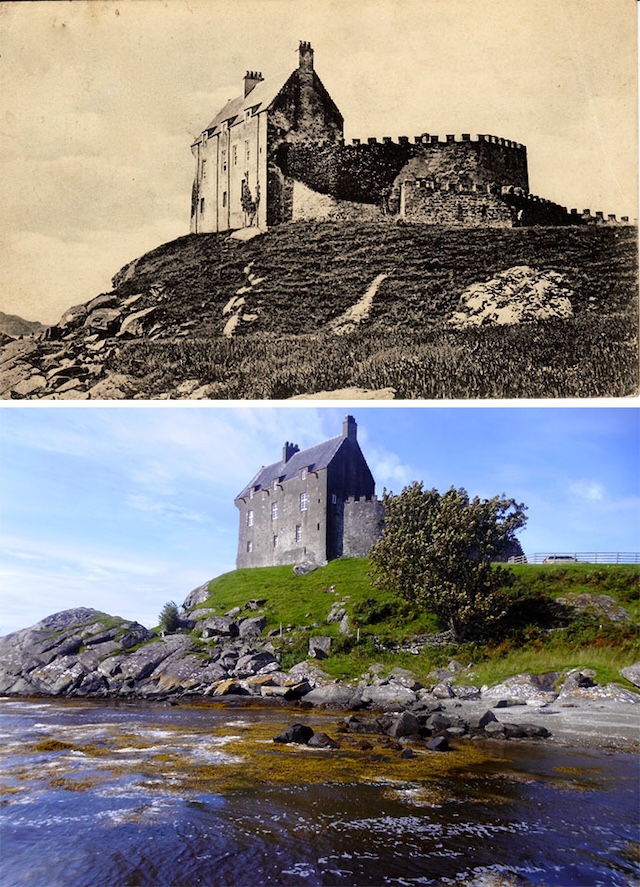
Conclusion: Duntrune’s Timeless Legacy
Duntrune Castle isn’t just a historical site—it’s a living testament to Scotland’s resilience and beauty. From its origins as a MacDougall stronghold to its enduring legacy under the Malcolm family, the castle has stood the test of time, weathering wars, legends, and centuries of change. And through it all, the statue of the stag has come to represent the spirit of the castle—a silent sentinel guarding its history and future.
Whether you’re a history buff, a lover of legends, or simply seeking a quiet retreat, Duntrune Castle offers something for everyone. It’s more than a castle—it’s a story waiting to be discovered.
